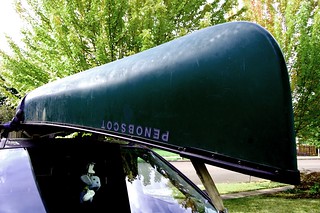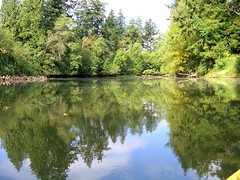I don’t get to vote on Beaverton’s urban renewal ballot measure, 34-192, which is part of the reason I think it should be defeated.
The City of Beaverton, which comprises only a small part of greater Beaverton, wants to siphon off 30 years worth of incremental tax revenue growth, to the tune of $150 million (plus interest) to pay for transportation projects and unspecified direct investment in commercial real estate development.
To understand why this is wrong, you have to understand the rather complex structure of government in Washington County. We have overlaid tax districts here, which provide many of the basic services you might normally expect from a municipal government. Since a large portion of greater Beaverton is unincorporated, most of these overlaid districts provide services to both Beaverton residents and non-residents alike.
The overlaid tax districts include the Beaverton School District (BSD), Tualatin Hills Park and Recreation District (THPRD), and Tualatin Valley Fire and Rescue (TVF&R). And of course, there’s Washington County, too, which provides human services, courts, elections, public health, etc.
Since most municipal services are provided by independent government bodies, the City of Beaverton’s services are limited to police, transportation and land use planning.
On a typical tax bill for a piece of property within the City of Beaverton, the city’s portion of the total tax only comes to about 22%. Education, including BSD and Portland Community College, is the biggest chunk, at 40%. The county takes 16%, TVF&R 10% and THPRD 9%.
So when the City of Beaverton proposes an urban renewal district — which, by the way, would encompass fully eight percent of all land within Beaverton city limits — diverting $150 million from future revenue increases, what they’re talking about is taking money from education ($60 million), from the county ($24 million), from fire and rescue ($15 million) and from parks ($13.5 million). Of that $150 million, only $33 million would otherwise go to the City of Beaverton without the urban renewal area.
Now, I realize they’ve somehow gotten buy-in from BSD, THPRD and TVF&R, and all these agencies have endorsed the ballot measure. But it still doesn’t wash for me.
Beaverton officials are more than happy to lie about urban renewal and its impact on overlaid tax districts. In the July/August 2011 Your City newsletter (PDF), City Council member Ian King does some disingenuous hand waving about the diversion of funds from schools.
Will Urban Renewal take money away from Beaverton schools?
The short answer to this is also: No. Schools are funded by income taxes from the State School Fund and not local school funds.
Anybody who can read their property tax bill knows this is pure bullshit. BSD, THPRD and TVF&R have all acknowledged this will cost them money (how they were convinced to hold their noses and support this would be a good topic for another day).
Diversion of funds from critical services aside, there are other reasons to argue against this one.
- Beaverton’s only other URA, in 1972, was used entirely for transportation improvements. In the current proposal, only 48% ($72 million) would go to transportation, and another 4% ($6 million) would go to streetscape and creek improvements. A very troubling 33% ($49.5 million) would go to “Joint Investment Programs,” which involve direct investment in commercial real estate development. If you think Beaverton has the expertise to be successful in commercial real estate development, I invite you to look up the “Beaverton Round.” I rest my case.
- It’s nice that Beaverton residents get to vote on whether to take funding away from other Washington County residents, but it seems like all affected citizens ought to be able to vote on this. Maybe those of us in unincorporated Washington County should vote on whether to raid the Beaverton Planning Commission’s budget in order to pay for our street lights (yes, I have a line item on my tax bill for street lights).
- The head of Beaverton’s Urban Redevelopment Agency, which would be in charge of spending the loot, is none other than Don Mazziotti, who had his way with the funds at Portland’s urban renewal agency, PDC. His tenure there was pock-marked with the usual give-aways to big condo developers (like Homer Williams), as well as questionable use of the company credit card (over three years, he billed PDC nearly $13,000 for meals — nice work if you can get it).
And just to keep the UR cheerleaders at bay, yes I do understand how tax increment financing works.
Here’s the nutshell, for those who aren’t as nerdy as me: Oregon law allows cities to declare an area “blighted” (which is rather loosely defined), and create an urban renewal area. The city then sells municipal bonds and uses the proceeds to make infrastructure improvements which (ideally) spur private development, which (hopefully) causes the assessed value of property to rise. For the sake of the general property tax, assessments within the blighted area are frozen at the levels they start with, and revenues from taxes on incremental increases in property value pay off the bonds issued for the infrastructure improvements. (This is why it’s called tax increment financing.)
Once the bonds are paid off, the additional valuation of the property reverts to the general assessment, which, presumably, would then be higher than if urban renewal had never happened, and everybody’s happy.
This sounds great, but it’s based on at least one glaring, faulty assumption: that without the URA, property tax assessments would fall or stay flat. Given that assessments in Oregon typically lag significantly behind real property values (due largely to 1997’s Measure 47, which limited assessment increases to 3% per year), it is virtually inconceivable that over 30 years the net assessment within any significant part of town would stay level or drop.
Adding to this flaw is the fact that cities typically draw URAs to include properties that can’t be considered blighted by any stretch of the imagination, and that URAs have typically come to include shady development subsidies (including direct investment), and you’ve got a recipe for diverting large volumes of tax revenue from vital services and into the pockets of private real estate magnates.
Beaverton’s proposal doesn’t look anywhere close to as shady as a typical URA in Portland, where PDC acts more like an insular commercial real estate developer than a fully-accountable public agency. But this still looks like a bad deal for Beaverton and the rest of Washington County.
Please vote “No” on 34-192. If you can.









